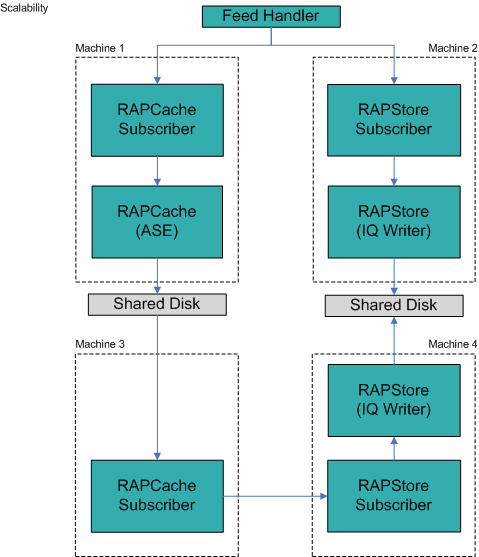High-volume systems perform most efficiently by using separate machines for transferring derived data.
In high-volume systems, the RAPCache subscriber and RAPStore subscriber machines can be so busy processing incoming message flow that there is no capacity left to process file transfers. For efficient high-volume operation, configure separate machines to process data transfers.
A second RAPCache subscriber can run on another machine. This RAPCache subscriber is configured to talk to the same RAPCache as the first RAPCache subscriber. The second RAPCache subscriber receives no incoming market data message traffic; it only proccesses data transfers. The second RAPCache subscriber must have access to a shared disk that is used by both RAPCache subscribers. When the Operations Console requests that the RAPCache export a file of data to be transferred, the second RAPCache subscriber, not the first, picks up the file from the shared disk and transfers it to the RAPStore subscriber.
A second RAPStore subscriber can also run. This RAPStore subscriber is configured to talk to a second RAPStore (the IQ Writer node) subscriber running on the same machine. The second RAPStore subscriber receives no incoming market data message traffic; it only receives and proccesses data transfers. Do not create market data tables on the second RAPStore.
